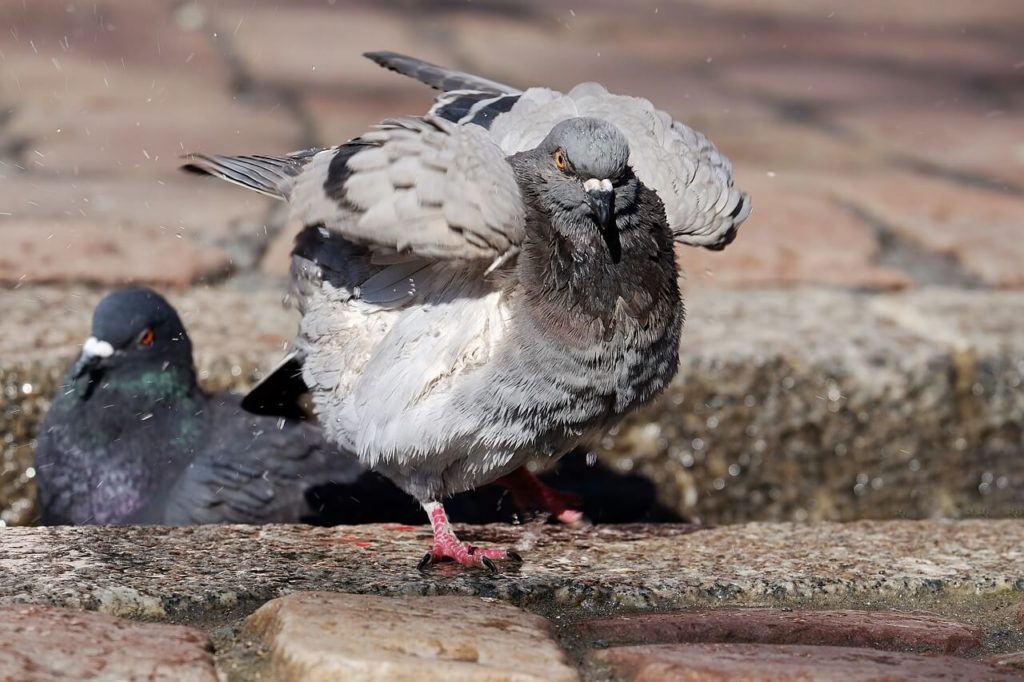
Birds rank as the world’s most numerically-successful four-limbed vertebrates, with approximately ten thousand living species. Wings, which evolved from forelimbs, give birds the ability to fly.
Appearance, life cycle and habits
Birds are a group of vertebrates, characterised by feathers, toothless beaked jaws, the laying of hard-shelled eggs, a four-chambered heart and a strong yet lightweight skeleton. Feral pigeons, also called city dives, city pigeons or street pigeons are derived from domestic pigeons that have returned from the wild. The domestic pigeon was originally bred from the wild rock pigeon, which naturally inhabits sea-cliffs and mountains. Feral pigeons find the ledges of building a perfect substitute for sea-cliffs and have become adapted to life and abundant in towns and cities all over the world. Pigeons often make nests in buildings and rapidly reproduce. Pigeons breed when the food supply is good, while wild rock pigeons only breed once a year. In the urban environment, because of their year-round supply, feral pigeons will breed continuously, laying eggs up to six times a year.
Feral pigeons are often considered a pest of even vermin, owing to concerns that they spread disease and are much maligned in the media for transmitting bird flu but it has been shown pigeons do not carry the deadly H5N1 strain.
Feral pigeons eat grass seeds and berries in urban parks and gardens in the spring, but they also scavenge and can eat from left behind food cartons or stale bread in parks. Pigeons tend to congregate in large, often thick flocks when going for discarded food, many have been observed flying skilfully around trees, buildings and telephone poles.
In the last few decades, people have begun to poison feral pigeons when their numbers become too large. This has proven to be fairly ineffective, as the surviving birds don’t leave the area, and they are left with more food per bird than before. This attracts pigeons from outside areas as well as encouraging more breeding and populations are re-established quickly.
Birds and Disease
Contact with pigeon droppings may pose a health risk. Three human diseases are known to be associated with pigeon droppings, namely histoplasmosis, cryptococcosis and psittacosis.

